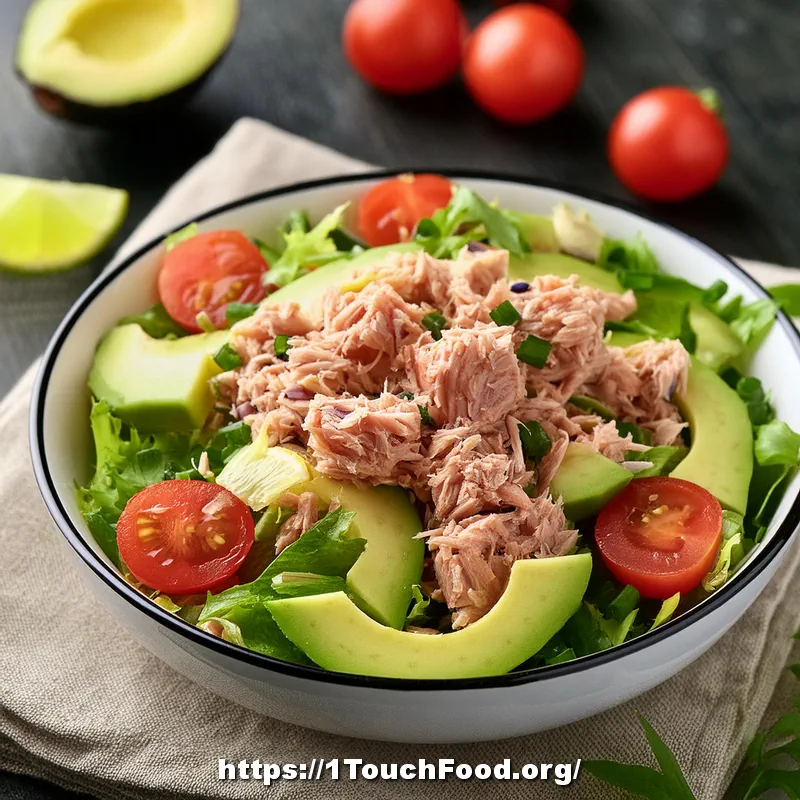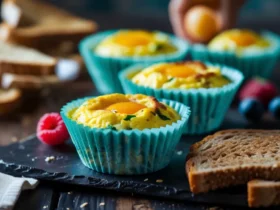Low-Sugar Recipes for Athletes – Boost Energy, Burn Fat, Build Muscle

Introduction: Power Up Without the Sugar Spike
In today’s performance-driven world, athletes are constantly looking for ways to fine-tune their diets to maximize strength, endurance, and recovery. One major shift in sports nutrition is the growing awareness around reducing added sugars. Low-sugar recipes for athletes are rapidly becoming a staple for those seeking cleaner fuel sources that support optimal performance without unwanted sugar crashes or inflammation.
While sugar has traditionally been seen as a quick energy fix, more research shows that not all sugars are created equal—and excess added sugar can actually sabotage an athlete’s progress. Whether you’re a runner, weightlifter, CrossFit enthusiast, or weekend warrior, focusing on low-sugar recipes for athletes can help stabilize energy, reduce fatigue, and keep your metabolism humming.
This doesn’t mean sacrificing flavor or enjoyment. The beauty of low-sugar meals lies in their creative use of natural ingredients that provide lasting fuel, without artificial sweeteners or refined carbs. These recipes fit seamlessly into special diet recipes for athletes such as paleo, keto, plant-based, or gluten-free plans, making them an incredibly versatile choice.
In this three-part series, we’ll dive into everything you need to know—from the science behind low-sugar nutrition to practical recipes and comparisons. Let’s start with the basics: what exactly does a low-sugar recipe look like for an athlete?

What Are Low-Sugar Recipes for Athletes?
To understand the impact of low-sugar meals, it’s important to first define what these recipes are and how they differ from general low-sugar or diet meals.
What “Low-Sugar” Really Means in Sports Nutrition
“Low sugar” doesn’t mean “no sugar.” Instead, it refers to meals that contain minimal added sugars—those not naturally found in whole foods. These recipes typically rely on nutrient-dense, slow-digesting carbohydrates (like oats, quinoa, or sweet potatoes), healthy fats, and clean proteins to sustain energy over a longer period.
When athletes adopt low-sugar recipes, they’re usually aiming to eliminate or drastically reduce processed sugars (think: high-fructose corn syrup, white sugar, and even some “healthy” syrups like agave). Instead, any sweetness comes from whole fruits, unsweetened dairy alternatives, or small amounts of natural sources like dates or maple syrup—always in moderation.
Common Ingredients in Low-Sugar Athletic Meals
Some hallmark ingredients of low-sugar recipes for athletes include:
-
Lean proteins: Chicken, turkey, eggs, tofu, tempeh
-
Complex carbs: Brown rice, sweet potatoes, lentils, quinoa
-
Healthy fats: Avocados, olive oil, nuts, seeds
-
Low-glycemic fruits: Berries, apples, bananas
-
Natural sweeteners (in small amounts): Dates, stevia, monk fruit
These recipes are designed to optimize macronutrient balance, prevent blood sugar spikes, and support muscle recovery—all key pillars of athletic success.
Who Can Benefit from These Recipes?
While these meals are tailored for active individuals, they’re not limited to elite athletes. Anyone engaging in regular physical activity—especially those with goals around lean muscle gain, fat loss, or improved stamina—can benefit from low-sugar eating.

Why Athletes Are Switching to Low-Sugar Meals
There’s a good reason “sugar-free” isn’t just a buzzword anymore in the fitness community. Here’s why low-sugar recipes are becoming the gold standard for performance nutrition.
1. Stable Energy and Enhanced Endurance
Sugary snacks might give a quick burst of energy, but they often lead to the dreaded crash soon after. Low-sugar meals, by contrast, provide a steady release of glucose into the bloodstream. This helps athletes:
-
Maintain consistent energy during long workouts
-
Prevent dips in focus or stamina
-
Avoid the insulin spikes that can lead to fat storage
This is especially crucial for endurance athletes like runners, cyclists, and swimmers, who need fuel that lasts.
2. Better Body Composition and Lean Muscle Support
Excess sugar intake can contribute to fat gain and water retention—two enemies of peak athletic form. Low-sugar diets help athletes maintain or build lean muscle mass while keeping body fat in check. Plus, the high protein content in these recipes supports muscle recovery and repair after intense training.
Athletes following special diet recipes like keto or paleo especially appreciate this benefit, since those plans already prioritize low-sugar, high-nutrient foods.
3. Improved Focus, Mood, and Sleep
Believe it or not, sugar impacts more than just physical performance—it affects cognitive function too. High-sugar meals are linked to mood swings, mental fog, and disrupted sleep patterns. By switching to low-sugar options, athletes often report:
-
Better concentration during workouts
-
Fewer cravings and emotional crashes
-
Higher quality rest and recovery overnight
4. Reduced Inflammation and Injury Risk
Many chronic injuries stem from underlying inflammation—something excess sugar can exacerbate. Low-sugar diets, rich in anti-inflammatory whole foods like leafy greens, omega-3s, and berries, can help reduce joint pain and speed up healing.
This makes low-sugar recipes a smart choice for injury-prone athletes or those in rehab and recovery phases.

How Special Diet Recipes for Athletes Naturally Align with Low-Sugar Nutrition
Athletes are increasingly embracing special diet recipes—not just to address allergies or preferences, but to gain a competitive edge. From paleo and keto to vegan and gluten-free, these eating plans often share one common thread: a natural emphasis on lower sugar intake. It’s no coincidence. The best special diet recipes for athletes focus on fueling performance with nutrient-rich ingredients, without relying on sugar-laden processed foods.
Paleo, Keto, and Whole30: Built-In Sugar Control
Many popular athlete-focused diets already restrict or eliminate added sugars. For example:
-
Paleo recipes focus on whole, ancestral foods like lean meats, vegetables, fruits, nuts, and seeds—completely cutting out refined sugar.
-
Keto diets are designed to shift the body into ketosis, a state that requires ultra-low carb and sugar intake, favoring fats as the primary fuel.
-
Whole30, a 30-day reset plan, forbids all added sugars, even natural ones like honey or maple syrup.
These plans naturally support athletes looking for low-sugar recipes because their guidelines eliminate many hidden sources of sugar—like commercial sauces, condiments, and sports drinks.
Plant-Based Athletes and Sugar Awareness
Even athletes following a plant-based or vegan diet can benefit from a low-sugar approach. While some plant-based diets include high-sugar items like energy bars or sweetened smoothies, a clean, whole-food vegan plan prioritizes:
-
Complex carbs like lentils, brown rice, and quinoa
-
Unprocessed plant proteins like tofu, tempeh, and beans
-
Natural sweetness from fruits, in moderation
Plant-based athletes also tend to consume more fiber, which slows down sugar absorption and helps regulate energy levels—key for endurance performance and recovery.

Gluten-Free and Anti-Inflammatory Eating Patterns
For athletes sensitive to gluten or those managing inflammation, reducing sugar becomes a natural part of the dietary plan. Many gluten-free recipes eliminate processed carbs like white bread and pastries, which are often loaded with both sugar and additives. Instead, gluten-free low-sugar meals include ingredients like:
-
Sweet potatoes
-
Millet and quinoa
-
Leafy greens and cruciferous vegetables
Anti-inflammatory diets, such as those adopted by athletes recovering from injury, also discourage refined sugar due to its link with increased inflammation markers in the body.
In essence, no matter which special diet an athlete follows, the common denominator of success often lies in choosing low-sugar, whole-food-based meals—a nutritional blueprint that supports strength, stamina, and long-term wellness.

Adapting Low-Sugar Meals to Fit Every Type of Athlete
There’s no one-size-fits-all when it comes to athletic nutrition. A sprinter’s dietary needs differ greatly from those of a triathlete, weightlifter, or yogi. But what they all share is the need for steady energy, fast recovery, and minimal inflammation—things that low-sugar recipes for athletes support across the board.
Endurance Athletes: Long-Lasting Fuel
Endurance athletes like marathoners, swimmers, and cyclists burn through energy at a high rate. They need meals that provide sustained fuel, not sugar spikes. Smart low-sugar strategies include:
-
Oatmeal with chia seeds and almond butter
-
Rice bowls with lean protein and vegetables
-
Energy bites made with dates, oats, and nuts
These meals release glucose slowly, offering steady stamina without mid-race crashes. Natural sugars from fruits like bananas or raisins can be used sparingly pre- or post-exercise.
Strength Athletes: Muscle Gains Without Sugar Bloat
Bodybuilders, powerlifters, and strength-focused athletes often watch their carb and sugar intake closely to stay lean and muscular. Low-sugar, high-protein meals help reduce water retention and support anabolic recovery.
Great low-sugar meals for strength athletes might include:
-
Grilled chicken and roasted veggies with avocado
-
Egg white omelets with spinach and mushrooms
-
Protein pancakes sweetened with mashed banana or cinnamon
Even post-workout shakes can go low sugar by using unsweetened protein powder, almond milk, and berries instead of sugary mixes.
Recreational Athletes and Fitness Enthusiasts: Balanced and Clean
For the average gym-goer, recreational runner, or yoga lover, low-sugar meals are a great way to maintain a healthy metabolism and avoid mood swings caused by sugar crashes.
Sample ideas include:
-
Quinoa salad with black beans and lime
-
Zucchini noodles with turkey meatballs
-
Greek yogurt bowls with flaxseed and blueberries
These meals are simple to prep, delicious, and perfectly suited for daily activity levels without the sluggishness that comes with sugar-heavy eating.
Athletes in Recovery or Off-Season: Healing and Hormone Balance
Low-sugar recipes are especially important during recovery periods or off-season training. Excess sugar can increase inflammation and disrupt hormones like insulin and cortisol, which can interfere with healing.
Recipes for this stage often prioritize:
-
Omega-3 rich fats (like salmon or walnuts)
-
Leafy greens and cruciferous veggies
-
Bone broth, legumes, and unsweetened herbal teas
By keeping sugar low and nutrients high, these meals help athletes bounce back stronger, reduce soreness, and stay lean even while resting.

Low-Sugar vs. High-Sugar Meals: Which Fuels Athletes Better?
As performance-focused nutrition evolves, many athletes are questioning the traditional reliance on sugar-heavy snacks and energy drinks. How do low-sugar recipes for athletes actually stack up against high-sugar options when it comes to real-world results?
Let’s break it down:
| Factor | Low-Sugar Recipes | High-Sugar Meals |
|---|---|---|
| Energy Stability | Steady, long-lasting energy without crashes | Quick boost, followed by fatigue and energy dip |
| Recovery Support | Rich in protein, antioxidants, and anti-inflammatory foods | May cause post-exercise inflammation and soreness |
| Body Composition | Promotes lean muscle and fat loss | May contribute to water retention and fat storage |
| Blood Sugar Control | Maintains insulin balance and supports endurance | Spikes blood sugar, leading to insulin resistance |
| Mental Focus | Enhances clarity and mood | Linked to brain fog, irritability, and cravings |
| Inflammation Levels | Minimizes inflammation and supports healing | Can increase systemic inflammation and joint pain |
Clearly, low-sugar recipes offer more sustainable, long-term advantages for active individuals. While high-sugar meals might have short-term appeal—especially post-workout—they come with risks that can hinder both performance and recovery.

How to Create Easy, Athlete-Approved Low-Sugar Meals
Switching to a low-sugar diet doesn’t mean giving up taste, variety, or your favorite dishes. With the right strategies, athletes can enjoy flavorful meals that fuel performance while keeping sugar in check.
1. Rethink Your Breakfast
Breakfast is often where sugar sneaks in—via cereals, flavored yogurt, granola bars, or juices. Swap these with:
-
Scrambled eggs with sautéed spinach and avocado
-
Chia pudding made with unsweetened almond milk and berries
-
Oats topped with almond butter, hemp seeds, and cinnamon
These options balance protein, fiber, and healthy fats—ideal for morning workouts or sustained focus.
2. Ditch Processed Snacks
Bars, trail mix, and “health cookies” often contain more sugar than candy. Replace with:
-
Boiled eggs and a handful of almonds
-
Hummus with cucumber and carrot sticks
-
DIY no-bake energy balls (made with oats, nut butter, and a few dates)
3. Read Labels Like a Pro
Athletes often fall for “fitness-friendly” products that still contain added sugars. Watch for ingredients like:
-
Cane sugar
-
Dextrose
-
Maltodextrin
-
Corn syrup
-
Fruit juice concentrate
Choose snacks and sports drinks with no added sugar or naturally occurring sugars only.
4. Use Natural Sweetness Wisely
Sometimes you need just a little sweetness. Try:
-
Mashed ripe banana or apple sauce in baking
-
Medjool dates blended into smoothies
-
Unsweetened cocoa with cinnamon and nut butter
The key is to keep portions small and balance them with protein or fat to reduce the glycemic load.
5. Prep in Batches
To stick to your low-sugar meal plan, prep large portions of:
-
Roasted vegetables and lean protein
-
Grain bowls with herbs and olive oil
-
Overnight oats or egg muffins
Having healthy options on hand reduces temptation and makes post-training recovery easier.

FAQs About Low-Sugar Recipes for Athletes
1. How much sugar is too much for an athlete?
Most nutrition experts recommend limiting added sugars to less than 25–30 grams per day, even for active individuals. Natural sugars from fruits are acceptable in moderation, but it’s best to pair them with protein or fat for balance.
2. Can I still eat carbs on a low-sugar diet?
Absolutely! Low-sugar doesn’t mean low-carb. Complex carbs like sweet potatoes, brown rice, oats, lentils, and fruits are essential for fueling muscles. The goal is to avoid refined sugars, not carbs altogether.
3. What are some quick low-sugar pre-workout snacks?
Try:
-
A boiled egg with half a banana
-
Greek yogurt with chia seeds
-
A rice cake with almond butter
These provide clean energy without the sugar crash.
4. Are sports drinks okay on a low-sugar diet?
Most commercial sports drinks contain 20–30g of added sugar per serving. For light to moderate workouts, opt for water or coconut water. For longer sessions, try homemade electrolyte drinks using lemon, sea salt, and a splash of fruit juice.
5. Do low-sugar diets affect performance negatively?
Not at all—when done correctly, low-sugar diets enhance performance by improving energy regulation, reducing inflammation, and supporting recovery. The key is to get energy from whole foods, not quick sugar hits.

Conclusion: Train Smart. Eat Clean. Win Naturally.
Athletes at every level are discovering the powerful benefits of low-sugar recipes—from stable energy and faster recovery to reduced inflammation and better focus. These meals align seamlessly with special diet recipes for athletes, offering versatility and performance fuel without the crash.
Whether you’re training for your next big event or simply striving for a healthier, more balanced lifestyle, reducing sugar can elevate your game. Try out some of the tips and strategies from this guide, and fuel your body the clean, smart way.
Enjoy! See our youtube. Quench your thirst and revitalize your body with our collection of refreshing and hydrating recipes. All athletes must pay close attention to their nutrition to achieve optimal performance. You can see CookBook for athletes and Building a Bigger Butt. Its very useful for athletes.












Leave a Reply